Water for wound cleansing
- PMID: 36103365
- PMCID: PMC9473482
- DOI: 10.1002/14651858.CD003861.pub4
Water for wound cleansing
Abstract
Background: Although various solutions have been recommended for cleansing wounds, normal saline is favoured as it is an isotonic solution and is not thought to interfere with the normal healing process. Tap water is commonly used in community settings for cleansing wounds because it is easily accessible, efficient and cost-effective; however, there is an unresolved debate about its use.
Objectives: To assess the effects of water for wound cleansing.
Search methods: For this fifth update, in May 2021 we searched the Cochrane Wounds Specialised Register; the Cochrane Central Register of Controlled Trials (CENTRAL); Ovid MEDLINE; Ovid Embase and EBSCO CINAHL Plus. We also searched clinical trials registries for ongoing and unpublished studies, and scanned reference lists of relevant included studies as well as reviews, meta-analyses and health technology reports to identify additional studies. There were no restrictions with respect to language, date of publication or study setting.
Selection criteria: We included all randomised controlled trials (RCTs) that assessed wound cleansing using different types of water (e.g. tap water, distilled, boiled) compared with no cleansing or with other solutions (e.g. normal saline). For this update, we excluded quasi-RCTs, thereby removing some studies which had been included in the previous version of the review.
Data collection and analysis: Two review authors independently carried out trial selection, data extraction and GRADE assessment of the certainty of evidence.
Main results: We included 13 trials in this update including a total of 2504 participants ranging in age from two to 95 years. Participants in the trials experienced open fractures, surgical wounds, traumatic wounds, anal fissures and chronic wounds. The trials were conducted in six different countries with the majority conducted in India and the USA. Three trials involving 148 participants compared cleansing with tap water with no cleansing. Eight trials involving 2204 participants assessed cleansing with tap water compared with cleansing with normal saline. Two trials involving 152 participants assessed cleansing with distilled water compared with cleansing with normal saline. One trial involving 51 participants also assessed cleansing with cooled boiled water compared with cleansing with normal saline, and cleansing with distilled water compared with cleansing with cooled boiled water. Wound infection: no trials reported on wound infection for the comparison cleansing with tap water versus no cleansing. For all wounds, eight trials found the effect of cleansing with tap water compared with normal saline is uncertain (risk ratio (RR) 0.84, 95% confidence interval (CI) 0.59 to 1.19); very low-certainty evidence. Two trials comparing the use of distilled water with normal saline for cleansing open fractures found that the effect on the number of fractures that were infected is uncertain (RR 0.70, 95% CI 0.45 to 1.09); very low-certainty evidence. One trial compared the use of cooled boiled water with normal saline for cleansing open fractures and found that the effect on the number of fractures infected is uncertain (RR 0.83, 95% CI 0.37 to 1.87); very low-certainty evidence. This trial also compared the use of distilled water with cooled boiled water and found that the effect on the number of fractures infected is uncertain (RR 0.59, 95% CI 0.24 to 1.47); very low-certainty evidence. Wound healing: results from three trials comparing the use of tap water with no wound cleansing demonstrated there may be little or no difference in the number of wounds that did not heal between the groups (RR 1.04, 95% CI 0.95 to 1.14); low-certainty evidence. The effect of tap water compared with normal saline is uncertain; two trials were pooled (RR 0.57, 95% CI 0.30 to 1.07) but the certainty of the evidence is very low. Results from one study comparing the use of distilled water with normal saline for cleansing open fractures found that there may be little or no difference in the number of fractures that healed (RR could not be estimated, all wounds healed); the certainty of the evidence is low. Reduction in wound size: the effect of cleansing with tap water compared with normal saline on wound size reduction is uncertain (RR 0.97, 95% CI 0.56 to 1.68); the certainty of the evidence is very low. Rate of wound healing: the effect of cleansing with tap water compared with normal saline on wound healing rate is uncertain (mean difference (MD) -3.06, 95% CI -6.70 to 0.58); the certainty of the evidence is very low.
Costs: two trials reported cost analyses but the cost-effectiveness of tap water compared with the use of normal saline is uncertain; the certainty of the evidence is very low. Pain: results from one study comparing the use of tap water with no cleansing for acute and chronic wounds showed that there may be little or no difference in pain scores. The certainty of the evidence is low. Patient satisfaction: results from one study comparing the use of tap water with no cleansing for acute and chronic wounds showed that there may be little or no difference in patient satisfaction. The certainty of evidence is low. The effect of cleansing with tap water compared with normal saline is uncertain as the certainty of the evidence is very low.
Authors' conclusions: All the evidence identified in the review was low or very low certainty. Cleansing with tap water may make little or no difference to wound healing compared with no cleansing; there are no data relating to the impact on wound infection. The effects of cleansing with tap water, cooled boiled water or distilled water compared with cleansing with saline are uncertain, as is the effect of distilled water compared with cooled boiled water. Data for other outcomes are limited across all the comparisons considered and are either uncertain or suggest that there may be little or no difference in the outcome.
Trial registration: ClinicalTrials.gov NCT01846598 NCT02820272.
Copyright © 2022 The Cochrane Collaboration. Published by John Wiley & Sons, Ltd.
Conflict of interest statement
Ritin Fernandez: none known.
Heidi Green: none known.
Rhonda Griffiths: none known.
Ross Atkinson: none known.
Laura Ellwood: works as a health professional.
Ritin Fernandez and Rhonda Griffiths conducted one of the trials included in the review, however the authors did not receive from any commercial entity any payments or pecuniary, in‐kind or other professional or personal benefits that were related in any way to the subject of the work. The authors of this trial were also not involved in the data extraction or RoB assessment for this included trial. This trial was also subject to the same rigorous quality assessment as other trials included in the review.
Figures
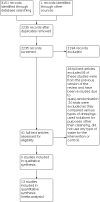

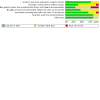
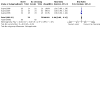


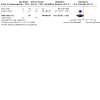
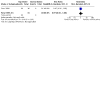
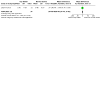
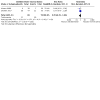



Update of
-
Water for wound cleansing.Cochrane Database Syst Rev. 2012 Feb 15;(2):CD003861. doi: 10.1002/14651858.CD003861.pub3. Cochrane Database Syst Rev. 2012. Update in: Cochrane Database Syst Rev. 2022 Sep 14;9:CD003861. doi: 10.1002/14651858.CD003861.pub4. PMID: 22336796 Updated.
References
References to studies included in this review
Bansal 2002 {published data only}
-
- Bansal BC, Wiebe RA, Perkins SD, Abramo TJ. Tap water for irrigation of lacerations. American Journal of Emergency Medicine 2002;20(5):469-72. - PubMed
Chan 2016 {published data only}
-
- Chan MC, Cheung K, Leung P. Tap water versus sterile normal saline in wound swabbing. Journal of Wound, Ostomy and Continence Nursing 2016;43(2):140-7. - PubMed
Godinez 2002 {published data only}
-
- Godinez FS, Grant-Levy TR, McGuirk TD, Letterle S, Eich M, O'Malley GF. Comparison of normal saline vs tap water for irrigation of minor lacerations in the emergency department. Academic Emergency Medicine 2002;19(5):396-7.
Griffiths 2001 {published data only}
-
- Griffiths RD, Fernandez RS, Ussia CA. Is tap water a safe alternative to normal saline for wound irrigation in the community setting? Journal of Wound Care 2001;10(10):407-11. - PubMed
Gupta 2006 {published data only}
-
- Gupta PJ. Randomized, controlled study comparing sitz‐bath and no‐sitz‐bath treatments in patients with acute anal fissures. ANZ Journal of Surgery 2006;76(8):718-21. - PubMed
Gupta 2007 {published data only}
-
- Gupta PJ. Effects of warm water sitz bath on symptoms in post-anal sphincterotomy in chronic anal fissure—a randomized and controlled study. World Journal of Surgery 2007;31(7):1480-4. - PubMed
Gupta 2008 {published data only}
-
- Gupta PJ. Warm sitz bath does not reduce symptoms in posthaemorrhoidectomy period: a randomized, controlled study. ANZ Journal of Surgery 2008;78(5):398-401. - PubMed
Lakshmi 2011 {published data only}
-
- Lakshmi R, Andrews R, Chumber S. A study to compare the effectiveness of normal saline vs tap water in irrigation of chronic wounds. International Journal of Nursing Education 2011;3(1):19-21.
Mirshamsi 2007 {published data only}
-
- Mirshamsi MH, Ayatollahi J, Dashti-R MH. A comparison between traumatic wound infections after irrigating them with tap water and normal saline. World Journal of Medical Sciences 2007;2(1):58-61.
Moscati 2007 {published data only}
-
- Moscati RM, Mayrose J, Reardon RF, Janicke DM, Jehle DV. A multicentre comparison of tap water versus sterile saline for wound irrigation. Academic Emergency Medicine 2007;14:404-10. - PubMed
Museru 1989 {published data only}
-
- Museru LM, Kumar A, Ickler P. Comparison of isotonic saline, distilled water and boiled water in irrigation of open fractures. International Orthopaedics 1989;13(3):179-80. - PubMed
Olufemi 2017 {published data only}
References to studies excluded from this review
Angeras 1992 {published data only}
-
- Angeras MH, Brandberg A, Falk A, Seeman T. Comparison between sterile saline and tap water for the cleaning of acute traumatic soft tissue wounds. European Journal of Surgery 1992;158(6-7):347-50. - PubMed
-
- Falk A, Brandberg Å, Hall-Angerås M, Seeman T. Irrigation of acute traumatic soft tissue wounds - a comparison between sterile saline and tap water. Annales Chirurgiae et Gynaecologiae 1989;78(suppl 204):48.
Bansal 1993 {published data only}
-
- Bansal NK, Mukul MD. Comparison of topical phenytoin with normal saline in the treatment of chronic trophic ulcers in leprosy. International Journal of Dermatology 1993;32(3):210-3. - PubMed
Behmanesh 2013 {published data only}
-
- Behmanesh F, Aghamohammadi A, Zeinalzadeh M, Khafri S. Effects of olive oil sitz bath on improvement of perineal injury after delivery. Koomesh 2013;14(3):309-15.
Bulstrode 1988 {published data only}
-
- Bulstrode CJ, Goode AW, Scott PJ. A prospective controlled trial of topical irrigation in the treatment of delayed cutaneous healing in human leg ulcers. Clinical Science 1988;75(6):637-40. - PubMed
Burke 1998 {published data only}
-
- Burke DT, Ho CH, Saucier MA, Stewart G. Effects of hydrotherapy on pressure ulcer healing. American Journal of Physical Medicine and Rehabilitation 1998;77(5):394-8. - PubMed
Chisholm 1992 {published data only}
-
- Chisholm CD, Cordel WH, Rogers K, Woods JR. Comparsion of a new pressurized saline canister versus syringe irrigation for laceration cleansing in the emergency department. Annals of Emergency Medicine 1992;21(11):1364-7. - PubMed
Fraser 1976 {published data only}
Goldberg 1981 {published data only}
-
- Goldberg H, Rosenthal S, Nemetz J. Effect of washing closed head and neck wounds on wound healing and infection. American Journal of Surgery 1981;141:358-9. - PubMed
Greenway 1999 {published data only}
-
- Greenway SE, Filler LE, Greenway FL. Topical insulin in wound healing: a randomised, double-blind, placebo-controlled trial. Journal of Wound Care 1999;8(10):526-8. - PubMed
Johnson 1985 {published data only}
-
- Johnson JN, Croton RS, McGlinchey JJ, McLoughlin GA. The effect of povidone-iodine irrigation on perineal wound healing following proctectomy for carcinoma. Journal of Hospital Infection 1985;6(Suppl A):81-6. - PubMed
King 1984 {published data only}
-
- King J, Bulstrode C, Revell P. Irrigating fluid in arthroscopy. Lancet 1984;84(8369):159-60. - PubMed
Manhold 1976 {published data only}
-
- Manhold JH, Manhold EA, Singh S. Animal experimental procedure used in human subjects to compare healing effectiveness of saline, placebo, and a type of commercial oxygenating agent. Journal of Dental Research 1976;55(48):B73.
Medves 1997 {published data only}
Neues 2000 {published data only}
-
- Neues C, Haas P. Modification of postoperative wound healing by showering [[Beeinflussung der postoperativen wundheilung durch duschen]]. Der Chirurg 2000;71(2):234-6. - PubMed
Patterson 2005 {published data only}
-
- Patterson MM. Multicenter pin care study. Orthopaedic Nursing 2005;24(5):349-50. - PubMed
Riederer 1997 {published data only}
-
- Riederer SR, Inderbitzi R. Does a shower put postoperative healing at risk? Der Chirurg 1997;68(7):715-7. - PubMed
Ruhle 2017 {published data only}
-
- Rühle A, Oehme F, Börnert K, Fourie L, Babst R, Link BC, et al. Simple wound irrigation in the postoperative treatment for surgically drained spontaneous soft tissue abscesses: study protocol for a prospective, single-blinded, randomized controlled trial. JMIR research protocols 2017;6(5):e77 p.1-8. - PMC - PubMed
Scondotto 1999 {published data only}
-
- Scondotto G, Aloisi D, Ferrari P, Martini L. Treatment of venous leg ulcers with sulodexide. Angiology 1999;50(11):883-9. - PubMed
Selim 2000 {published data only}
-
- Selim P. Will water do? Cleansing of leg ulcers in the community. ACCNS Journal for Community Nurses 2000;5:11-3.
Selim 2001 {published data only}
-
- Selim P, Bashford C, Grossman C. Evidence-based practice: tap water cleansing of leg ulcers in the community. Journal of Clinical Nursing 2001;10:372-9. - PubMed
Svedman 1983 {published data only}
-
- Svedman P. Irrigation treatment of leg ulcers. Lancet 1983;2(8349):532-4. - PubMed
Sweet 1976 {published data only}
-
- Sweet JB, Butler DP, Drager JL. Effects of lavage techniques with third molar surgery. Oral Surgery, Oral Medicine, Oral Pathology 1976;41(2):152-8. - PubMed
Tay 1999 {published data only}
-
- Tay SK. Is routine procaine spirit application necessary in the care of episiotomy wound? Singapore Medical Journal 1999;40(9):581-3. - PubMed
Valente 2003 {published data only}
-
- Valente JH, Forti RJ, Freundlich LF, Zandieh SO, Crain EF. Wound irrigation: tap water or saline? In: Emergency Conference. 2001. - PubMed
-
- Valente JH, Forti RJ, Freundlich LF, Zandieh SO, Crain EF. Wound irrigation: tap water or saline? Pediatric Research 2001;49(4):78A.
-
- Valente JH, Forti RJ, Freundlich LF, Zandieh SO, Crain EF. Wound irrigation in children: saline solution or tap water? Academic Emergency Medicine 2001;8(5):539. - PubMed
-
- Valente JH, Forti RJ, Freundlich LF, Zandieh SO, Crain EF. Wound irrigation in children: saline solution or tap water? Annals of Emergency Medicine 2003;41:609-16. - PubMed
Voorhees 1982 {published data only}
-
- Voorhees E, Rosenthal D. Early postoperative showering. Military Medicine 1982;147(11):967-8. - PubMed
Weiss 2007 {published data only}
-
- Weiss E, Lin M, Oldham G. Tap water is equally safe and effective as sterile normal saline for wound irrigation; a double blind, randomized, controlled, prospective clinical trial. In: Society for Academic Emergency Medicine 2007 Annual Meeting; 2007 May 16-19; Chicago (IL). 2007:S146-7.
References to studies awaiting assessment
Cherry 2003 {published data only}
-
- Cherry GW. Comparison of Syerilox with tap water in the treatment of chronic venous ulcers of the leg. National Research Register 2003.
Saw 2006 {published data only}
-
- Saw A, Chan CK, Penafort R, Sengupta S. A simple practice protocol for care of metal-skin interface of external fixation. Medical Journal of Malaysia 2006;61(Suppl A):61-5. - PubMed
References to ongoing studies
NCT01846598 {published data only}
-
- NCT01846598. 48 hours after surgery shower patient's wound infection rate, pain score, patient satisfaction and cost. clinicaltrials.gov/ct2/show/nct01846598 (accessed November 2019).
NCT02820272 {published data only}
-
- NCT02820272. Water for reducing pain in negative pressure wound therapy. clinicaltrials.gov/ct2/show/NCT02820272 (accessed November 2019).
Additional references
Boga 2019
-
- Boga SM. Nursing practices in the prevention of post-operative wound infection in accordance with evidence-based approach. International Journal of Caring Sciences 2019;12(2):1228.
Brown 2018
-
- Brown A. Dispelling some myths and misconceptions in wound care. Journal of Community Nursing 2018;32(6):24-33.
Cullum 2016
-
- Cullum N, Buckley HL, Dumville J, Hall J, Lamb K, Madden MT, et al. Wounds research for patient benefit: a 5 year programme of research. Health Technology Assessment 2016;1:1-334. - PubMed
Cutting 2005
-
- Cutting KF, White RJ. Criteria for identifying wound infection—revisited. Ostomy Wound Manage 2005;51(1):28-34. - PubMed
Deeks 2020
-
- Deeks JJ, Higgins JP, Altman DG (editors). Chapter 10: Analysing data and undertaking meta-analyses. In: Higgins JP, Thomas J, Chandler J, Cumpston M, Li T, Page MJ, Welch VA (editors). Cochrane Handbook for Systematic Reviews of Interventions version 6.1 (updated September 2020). Cochrane, 2020. Available from www.training.cochrane.org/handbook.
Falabella 2006
-
- Falabella AF. Debridement and wound bed preparation. Dermatologic Therapy 2006;19(6):317-25. - PubMed
Fellows 2006
-
- Fellows J, Crestodina L. Home-prepared saline: a safe, cost-effective alternative for wound cleansing in home care. Journal of Wound Ostomy & Continence Nursing 2006;33(6):606-9. - PubMed
Fernandez 2004
-
- Fernandez R, Griffiths R, Ussia C. Effectiveness of solutions, techniques and pressure in wound cleansing. JBI Reports 2004;2(7):231-70. - PubMed
Glanville 2019
-
- Glanville J, Dooley G, Wisniewski S, Foxlee R, Noel-Storr A. Development of a search filter to identify reports of controlled clinical trials within CINAHL Plus. Health Information and Libraries Journal 2019;36(1):73-90. - PubMed
GRADEpro GDT [Computer program]
-
- GRADEpro GDT. Hamilton (ON): McMaster University (developed by Evidence Prime), 2015. Available at gradepro.org (accessed October 2020).
Guest 2017
Harding 2002
Hellewell 1997
-
- Hellewell TB, Major DA, Foresman PA, Rodeheaver GT. A cytotoxicity evaluation of antimicrobial and non antimicrobial wound cleansers. Wounds 1997;9(1):15-20.
Higgins 2017
-
- Higgins JP, Altman DG, Sterne JA (editors). Chapter 8: Assessing risk of bias in included studies. In: Higgins JP, Churchill R, Chandler J, Cumpston MS (editors), Cochrane Handbook for Systematic Reviews of Interventions version 5.2.0 (updated June 2017), Cochrane, 2017. Available from www.training.cochrane.org/handbook.
Higgins 2022
-
- Higgins JP, Eldridge S, Li T, editor(s). Chapter 23: Including variants on randomized trials. In: Higgins JP, Thomas J, Chandler J, Cumpston M, Li T, Page MJ, Welch VA, editor(s). Cochrane Handbook for Systematic Reviews of Interventions version 6.3 (updated February 2022). Cochrane, 2022. Available from training.cochrane.org/handbook.
James 2008
-
- James GA, Swogger E, Wolcott R, Pulcini ED, Secor P, Sestrich J, et al. Biofilms in chronic wounds. Wound Repair and Regeneration 2008;16(1):37-44. - PubMed
Korting 2011
-
- Korting HC, Schöllmann C, White RJ. Management of minor acute cutaneous wounds: importance of wound healing in a moist environment. Journal of the European Academy of Dermatology and Venereology 2011;25(2):130-7. - PubMed
Lee 2009
-
- Lee CK, Hansen SL. Management of acute wounds. Surgical Clinics of North America 2009;89(3):659-76. - PubMed
Lefebvre 2021
-
- Lefebvre C, Glanville J, Briscoe S, Littlewood A, Marshall C, Metzendorf M-I, et al. Chapter 4: Searching for and selecting studies. In: Higgins JP, Thomas J, Chandler J, Cumpston M, Li T, Page MJ, Welch VA (editors). Cochrane Handbook for Systematic Reviews of Interventions version 6.2 (updated February 2021). Cochrane, 2021. Available from www.training.cochrane.org/handbook.
Liberati 2009
McCaughan 2018
Mohamed 2015
-
- Mohamed MA, Sharaf AY, Ibrahim MH. Cooled boiled tap water versus sterile normal saline for traumatic wound cleansing: a comparative clinical trial. World Journal of Nursing Sciences 2015;1(3):100-9.
Nussbaum 2018
-
- Nussbaum SR, Carter MJ, Fife CE, DaVanzo J, Haught R, Nusgart M, et al. An economic evaluation of the impact, cost, and medicare policy implications of chronic nonhealing wounds. Value in Health 2018;21(1):27-32. - PubMed
Posnett 2008
-
- Posnett J, Franks P. The burden of chronic wounds in the UK. Diabetic Med 2008;14(5):S7-85. - PubMed
Resende 2016
Review Manager 2020 [Computer program]
-
- Review Manager 5 (RevMan 5). Version 5.4. Copenhagen: The Cochrane Collaboration, 2020.
Salami 2006
-
- Salami AA, Imosemi IO, Owoeye OO. A comparison of the effect of chlorhexidine, tap water and normal saline on healing wounds. International Journal of Morphology 2006;24(4):673-6.
Schünemann 2020
-
- Schünemann HJ, Higgins JP, Vist GE, Glasziou P, Akl EA, Skoetz N, et al. Chapter 14: Completing ‘Summary of findings’ tables and grading the certainty of the evidence. In: Higgins JP, Thomas J, Chandler J, Cumpston M, Li T, Page MJ, Welch VA (editors). Cochrane Handbook for Systematic Reviews of Interventions version 6.1 (updated September 2020). Available from www.training.cochrane.org/handbook.
Spear 2011
-
- Spear M. Wound cleansing: solutions and techniques. Plastic Surgical Nursing 2011;31(1):29-31. - PubMed
Stadelmann 1998
-
- Stadelmann WK, Digenis AG, Tobin GR. Physiology and healing dynamics of chronic cutaneous wounds. American Journal of Surgery 1998;176(2):26S-38S. - PubMed
Stashak 2006
-
- Stashak TS. Wound infection: contributing factors and selected techniques for prevention. Injury 2006;9(12):13.
Swanson 2016
-
- Swanson T, Angel D, Sussman G, Cooper R, Haesler E, Ousey K, et al. Wound infection in clinical practice: principles of best practice. Wounds International, Internation Consensus Update 2016 2016:1-30.
Watret 2009
-
- Watret L, McClean A. Cleansing diabetic foot wounds: tap water or saline? Diabetic Foot 2009;12(3):134-9.
Wounds Australia 2016
-
- Wounds Australia. Standards for wound prevention and management. Wounds Australia 2016.
References to other published versions of this review
Fernandez 2002
Fernandez 2008
Publication types
MeSH terms
Substances
Associated data
LinkOut - more resources
Full Text Sources
Medical
Miscellaneous

